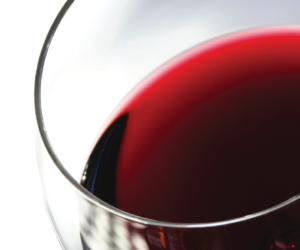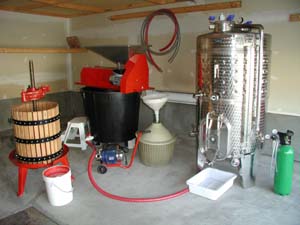Here are some of the best wine kit-related questions we’ve received from readers. Now, on to the questions!
QUESTION:
A kit I received as a gift instructs me to start fermentation at a specific gravity (SG) of 1.048 to 1.052. I have made a number of their kits before but usually the starting gravity is around 1.080 to 1.100. At that low of an SG the alcohol will be around 7%. I’m concerned with shelf life at this low-alcohol content: Can I add additional sugar to raise the starting specific gravity?
Al Hendricks
Green Bay, Wisconsin
ANSWER:
I know the kit you’re talking about very well: It’s a “Mist” wine, a blend of wine base with an add-pack of fruit juice that’s put in after fermentation, with the fining agents.
That particular manufacturer has a house style of low-alcohol, easy-to-drink fruit/wine beverages that are meant to be drank very young, and not to be aged for any length of time. It’s a fair idea, since a lot of people do exactly that. However, others (like you) are building up a cellar and don’t necessarily drink every bottle they make right away.
For you, there’s a simple fix: You can add sugar to bring up your specific gravity to a level that suits you better. With fruit wine kits I never recommend more than 11% ABV — much more than that and the alcohol can make the wine seem too aggressive and clumsy. It won’t make it taste “hot,” like the burn of alcohol (that takes over 18%), but it doesn’t do the wine any favors.
One pound of sugar dissolved in one gallon of water (0.45 kg in 3.8 L) will yield an increase in specific gravity of 0.042, and an alcohol content of approximately 5.5% ABV. We get that number by using the factor of 131 for SG to ABV conversions. From that, 0.042 x 131 = 5.5%
Working backwards, if you want to achieve an ABV of 11%, your starting SG has to be: 1+ (11÷131) = 1.084.
If your kit yields 1.050 when you make it up, you’ll need to add an extra 0.034 points of SG. So: 0.034÷0.042 = 0.81 lbs. per gallon
Multiply that by 6 gallons (23 L) and you’ve got 4.8 pounds (2.2 kg), or near enough to 5 pounds (2.3 kg) as not to matter. You can use dextrose, which dissolves in a flash, or you can use table sugar, but be sure to dissolve it very thoroughly before you pitch your yeast, and as always, make sure you stir very hard on day one.
(Not American/Liberian/Mynamarese? Then one kilogram of sugar dissolved in one liter of water yields an increase of 0.350 SG. That’s kind of a clumsy number, so if we move the decimal places over, 100 grams of sugar in one liter of water yields an increase of 0.035 SG — multiply by your desired SG and increase accordingly.)
That’s a simple-ish fix, but there are also fruit wine kits that start off in that range in the first place. They are designed to deliver a more robust and flavorful drinking experience while still drinking easy while young. Check with your favorite supplier to see what they have to offer.
QUESTION:
I have made a few kits in the past but predominantly make wine now from fresh fruit and juice. I belong to a small wine club locally and mentor a few of the newer winemakers who all make kits. I have noticed some off-flavors and aromas that I find to be common for all of them. The best I can describe it is banana and/or plastic, while others say piney or petroleum-like. The only commonality is they are all using a 100% juice kit. Could these flavors be coming from the plastic bags the juice is stored in? Any other ideas?
Dominick Profaci
Gardiner, New York
ANSWER:
I’m sure you’re doing all the standard good practices troubleshooting, but very quick first tip: If these were carboy samples, was there any (even the faintest hint) of dissolved gas/fizziness? Trapped CO2 also brings along a bunch of other aromatics, from hydrogen sulfide to isoamyl acetate (banana). Grab the sample, seal it in a container, shake the heck out of it, repeat twice, open it, let the gas blow off and try again. It can make a powerful and startling difference to the character of the wine.
The bags themselves are marvels of technology. For all practical purposes, they’re inert with regards to outgassing or giving off flavors, and they protect against oxygen transfer amazingly well for something not much thicker than a couple of sheets of paper.
If the wines are substantially degassed, the banana/ pine/petroleum characters tend more towards the profile of yeast artifacts as opposed to juice or processing flaws. One possibility is that pressed juices and kits tend to have fewer tannins than wine made from fresh grapes (even the whites!). Tannin can cover any number of sins in a young wine. That’s the key take-away here. Yeast produce any number of ketones, esters, aldehydes, and other flavor and aromatic compounds during fermentation. Over time these will be re-absorbed and/or converted in the ongoing biochemical process of aging. It’s quite possible that if these wines were left to age for a year to 18 months, the objectionable characters would fade and the true varietal character would come through.
Since kits are intended to be consumed while still quite young (kit manufacturers are keen students of their customers habits!) they tend to use yeast strains with powerful fermenting ability but neutral flavor and aroma characteristics. Juice kits might have more expressive yeast included, which can take longer to settle. Give ‘em time, and if that doesn’t work out, contact the manufacturer for suggestions.
QUESTION:
I wonder how a kit from Stag’s Leap or Old Vine Zinfandel would stand up to removing oak? I’d also be interested in trying it with a Tempranillo or a rich Merlot.
Christian Coronado
Vista, California
ANSWER:
Oak character in wine is an individual preference. When I was first starting to drink wine, I hated wood character.
After a year or so I started to enjoy it, and took it to the point of seeking out big “wood bomb” wines from Australia. Eventually I came around to seeking more balance — enough oak to give structure and hints of wood without overwhelming the fruit. But if you want to leave the oak out, that’s perfectly valid.
And, it’ll work fine with the wines you mention: Those kits aren’t over-oaked to begin with, so leaving the oak out will make them more fruit-forward, but they won’t lack tannin, structure, or length — it’s inherent in all of the varietals. Follow the instructions precisely, and don’t toss the oak out! The next time you’re firing up the smoker it will add a really fine character to ribs, brisket, or sausage, all of which will go well with the wines!
QUESTION:
What I really would like to know is if you know a lot about making dry, red wines using the FastFerment conical fermenter? I have made wine in it and they come out OK, but do you have a method on using the FastFerment that you can share?
Joe Calabretta
York, Pennsylvania
ANSWER:
The FastFerment is a 7.9 gallon (30 L) conical fermenter with a bottom valve and collection ball for removing sediment without racking. I’ve used them for beer and wine, and I think they’re a very low-maintenance and simple alternative to using a primary and racking to carboys. They also have plenty of room for foaming, and for doing additions of stabilizing and fining agents.
The only problem I have with them is for post-degassing/fining/stabilizing storage of wine: The way the vessel is constructed (upside-down raindrop) leaves a very large surface area exposed to oxygen transfer. This is no issue during primary or secondary fermentation, but once the wine is degassed, it’s no longer protected by a blanket of CO2, and oxygen exposure will begin the process of reducing the free sulfite. If it goes on long enough, your wine could start to oxidize. I’d say that you could do the whole process for a four-week kit, then rack it into a carboy if you wanted to age it longer. For six-week kits, I’d rack it out after the finings have settled and get it into a topped-up, sealed carboy, just to be on the safe side.
Other than that, they work just fine, exactly like any other carboy. Enjoy yours — they’re pretty cool-looking!
QUESTION:
Is that wine kit juice is partially concentrated, and some water must be added back, how is the initial concentration or dehydration accomplished? I always assumed it was by “vacuum dehydration,” whereby you can boil off the water at lower temperatures just by reducing the vapor pressure in the containment vessel holding the juice. I met someone who claimed the juice was just boiled in order to eliminate the water. If this was the case, I felt it would have a very negative impact on the juice. Could you describe the process for removing the water from the juice, and also provide the rationale for concentrating juice in the first place?
Bob Crook
Ottawa, Ontario
ANSWER:
You’ve got a couple of excellent questions in there. First, you’re correct: Vacuum distillation is the most frequent method of concentrating juice. There are a couple of other schemes, like reverse osmosis, but they’re either too expensive or limited to small batches.
Vacuum concentrators work like the reverse of a pressure cooker. By lowering the pressure inside the tank,
water can be made to boil at less than 120 °F (49 °C). At temperatures this low, browning and caramelization are prevented and water comes off as vapor, leaving behind concentrated grape juice. Because there are some aromatic compounds that can be carried away in this vapor, there is a fractional distillation apparatus on the concentrator to recover these essences, which are returned to the concentrate after processing.
Concentration is done for two reasons. The first is shipping, because if you can reduce the volume of grape juice by half or more, you get to ship it for half price or less.
Second, and much more important, is preservation. Fresh grape juice can’t be kept that way for very long. Straight out of the press it will only last hours before it starts to ferment from indigenous yeast, but even if you pasteurize it and add sulfite it will still begin to deteriorate and brown in only a few weeks, unless it’s frozen solid. When the concentrator removes the water it leaves behind a lot of sugar and acid. While there are some complex reactions that go on, the net result is that the concentrated juice behaves like jam. You can leave grape jelly on the counter for weeks and it won’t brown or ferment because of the high sugar content and low pH brought on by the concentration of acids.
And this is the secret third reason: When you blend a portion of high-Brix concentrate into fresh grape juice, that preservative effect is extended, and you can keep relatively low Brix blends of juice and concentrates shelf-stable for 12–18 months at a time. Pasteurize it and add the correct amount of sulfite and you can make a 3.9 gallon (15 liter) wine kit that will allow you to make wine any time of the year, not just within a few weeks of harvest.







